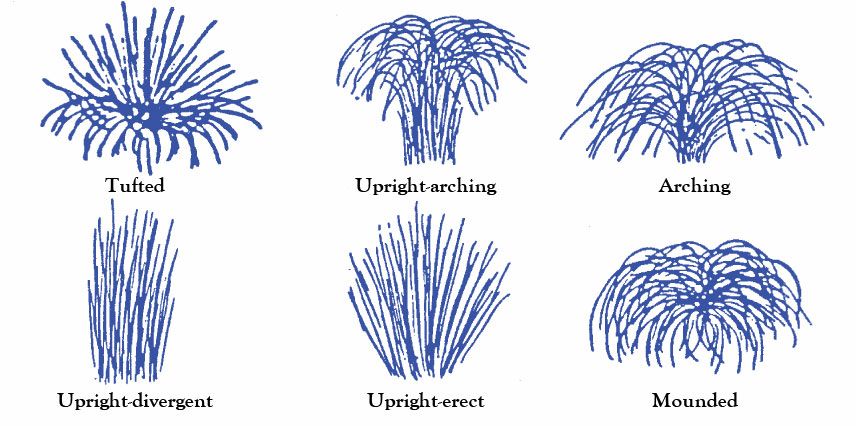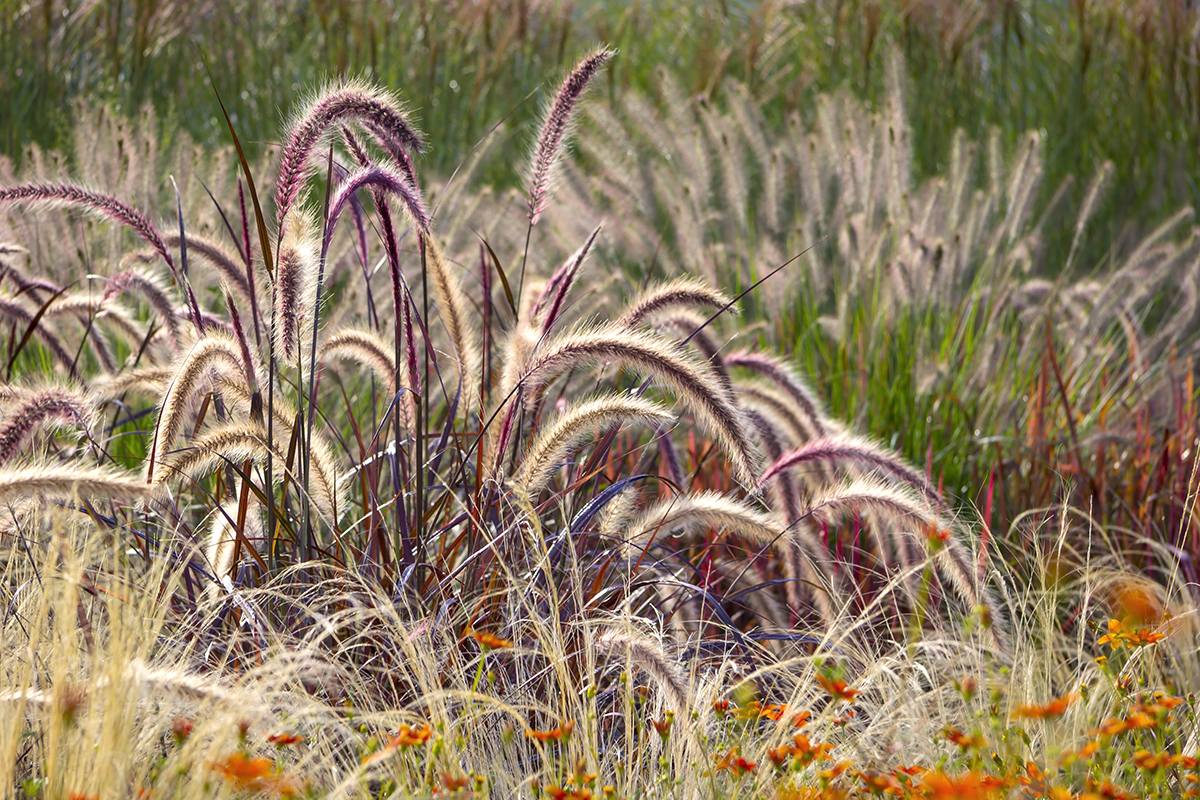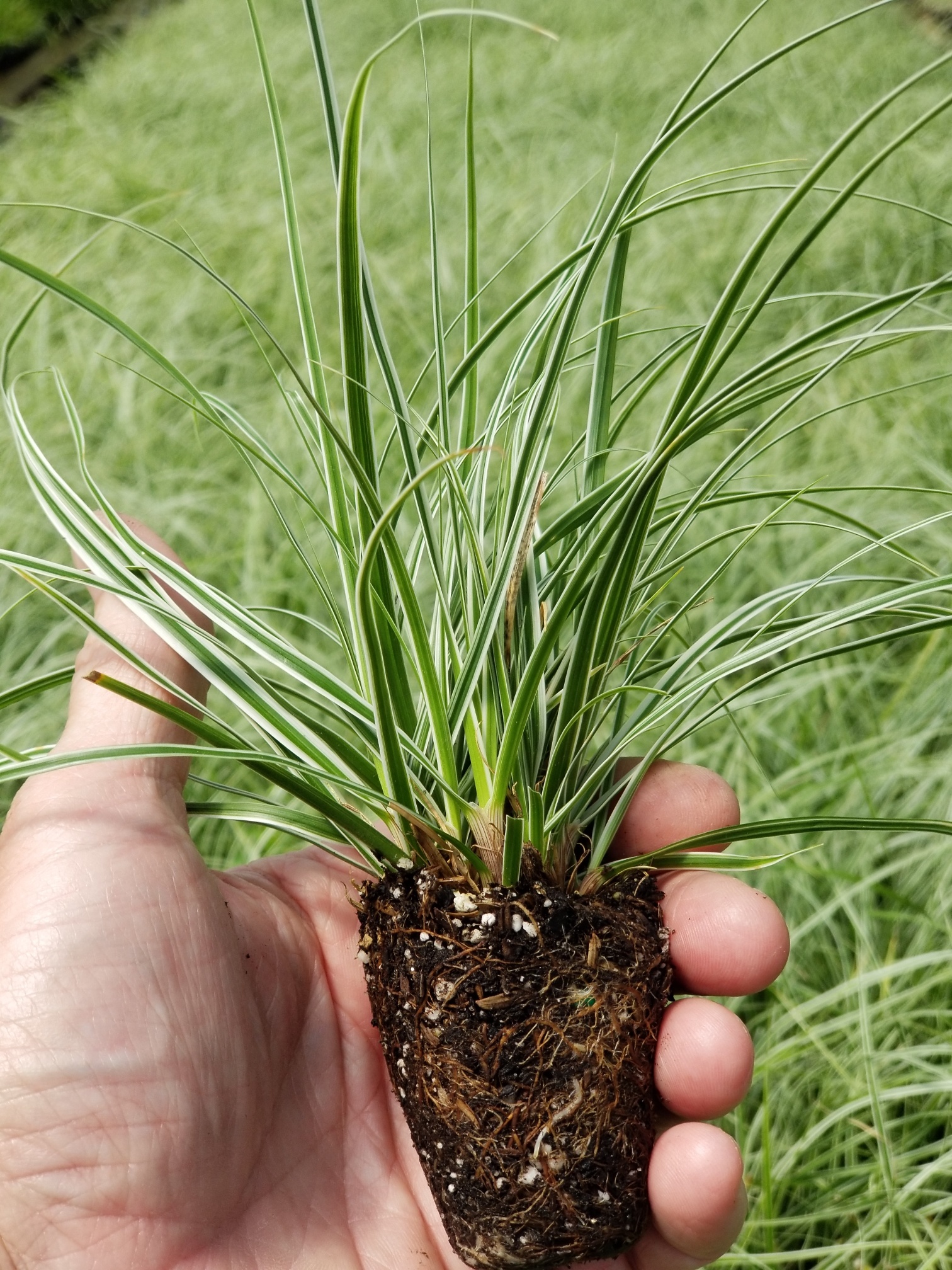Ornamental grasses have many uses in the landscape. Their wispy, graceful foliage adds interesting form and texture to both beds and borders. Taller species make effective screens while medium-sized species combine well with foundation plantings around the home. Shorter species can be incorporated into plantings of annuals or perennials, or they can be planted in masses for an interesting carpet bed effect. Spreading or running species are effective in stabilizing soil on steep banks or attractively occupying an area that is difficult to maintain. All ornamental grasses flower (most producing panicles, racemes or spikes), giving them additional appeal. While the flowers of most are not especially colorful, they do add interest and appeal and often are produced in late summer or early fall — a time when the garden could use a bit of change.
Ornamental grasses can also be classified according to their growth habit (shown at right). Most ornamental grasses form clumps, rendering them noninvasive and suitable for use as specimen plants or for massing. These grasses exhibit a wide array of architectural forms (see below).
The shortest ornamental grasses usually exhibit a tufted habit of growth (eg. fescue grass), and the tallest are upright arching in form (eg. zebra grass).




